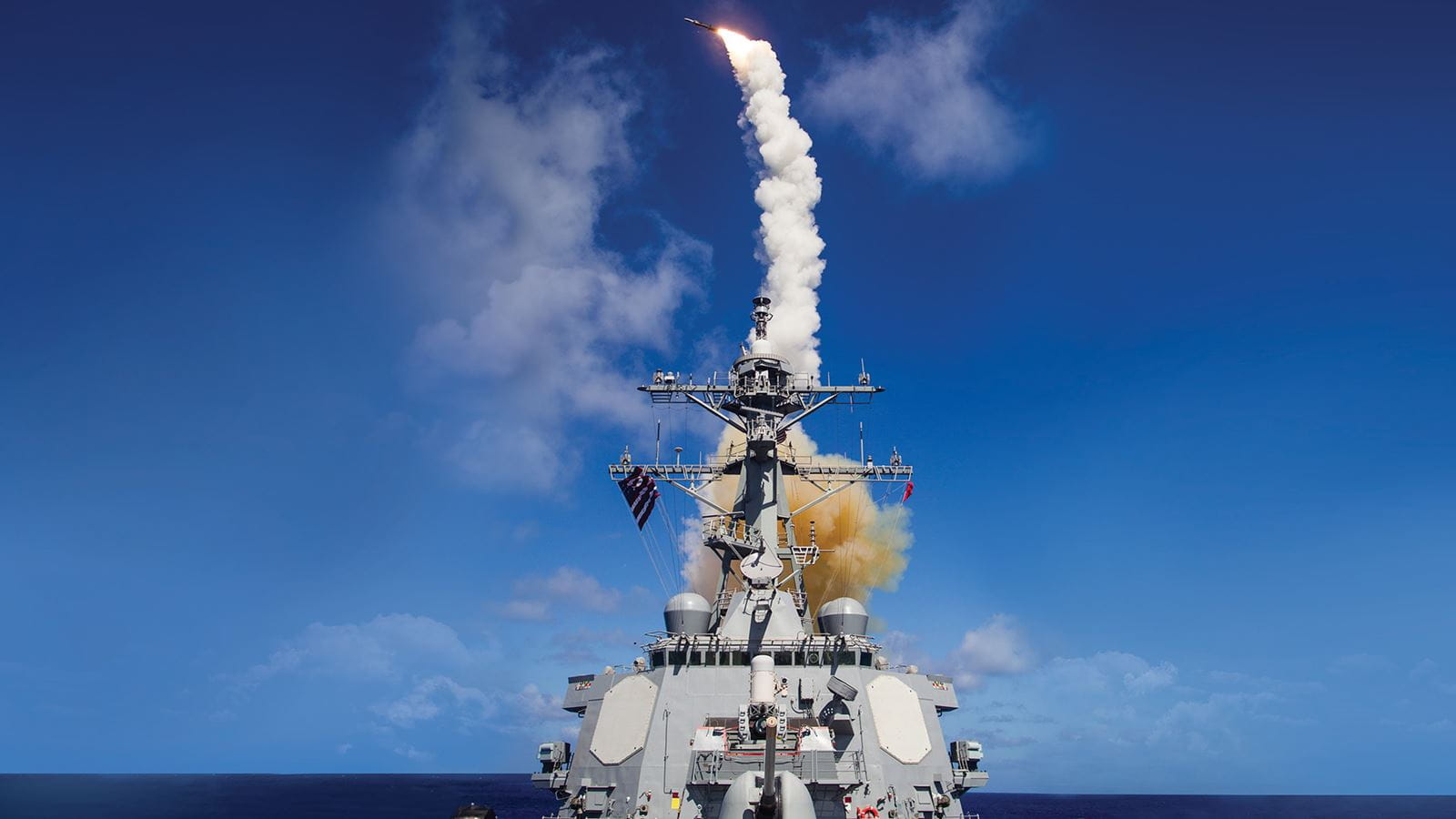"A billion here, a billion there, and pretty soon you're talking real money."
-- Senator Everett Dirksen
The honorable senator from Illinois went down in the history books with this famous quip about government spending -- which is nowhere truer than in the defense department, where billion-dollar paydays pop up with regularity. Still, when I took a look at the list of Pentagon contracts published on July 31 in particular, I admit my eyes did goggle a little.
In just two announcements amounting to fewer than 600 words total, the U.S. government awarded Lockheed Martin (LMT 0.89%) and RTX Corporation (RTX 0.33%) just under $7.8 billion.

Image source: Getty Images.
Big news for LockMart and RTX
Both contracts concern the ordering of missiles for the United States Air Force.
Lockheed Martin's Missiles and Fire Control division got the larger order: $4.3 billion to upsize a previous contract instructing Lockheed to build and deliver Joint Air-To-Surface Standoff Missiles (JASSM) and Long-Range, Anti-Ship Missiles (LRASM) for use by the USAF and foreign allies Finland, Japan, the Netherlands, and Poland by Jan. 31, 2033.
RTX's Raytheon military products division was awarded $3.5 billion to supply Advanced Medium Range Air-to-Air Missiles (AMRAAM) by fiscal third-quarter 2031. In addition to the U.S. Air Force, these missiles are destined for the air forces of a huge host of U.S. allies, covering almost the entire alphabet: Australia, Belgium, Canada, Denmark, Finland, Germany, Hungary, Israel, Japan, Kuwait, Lithuania, the Netherlands, Poland, Spain, Sweden, Switzerland, Taiwan, Ukraine, and the United Kingdom.
How to put big numbers in context
Are you impressed yet? Well, before getting too excited about the large numbers being bandied about, make sure to note the completion dates for both contracts. Lockheed Martin's LRASM/JASSM sales, for example, run through early 2033. That means you need to spread out the $4.3 billion contract value over more than seven years to get a sense of how much annual revenue this contract will contribute, and whether it's enough to "move the needle" on Lockheed stock.
Here's the answer: It bumps up Lockheed Martin's $71 billion-a-year revenue stream to perhaps $71.7 million -- an increase of less than 1%.
Similarly, RTX's $3.5 billion win spreads across six years. That works out to less than $600 million a year in extra orders. On RTX's $84 billion revenue stream, it's an increase of at most 0.7%.
Plus, bear in mind that the Pentagon was already buying missiles from both these companies. The new orders -- in large part -- will simply replenish backlog and continue revenues that LockMart and RTX were already collecting. Viewed in that context, it's entirely possible that the ongoing increase in annual revenue for each company will be less than 1%... or even less than 0.7%.

NYSE: RTX
Key Data Points
What this means for investors
All this said, and the caveats notwithstanding, we're still "talking real money" here -- even if it's not necessarily "move the needle" amounts of money. What's surprising to me is how much better RTX has been lately at turning revenue money into GAAP profits.
According to data from S&P Global Market Intelligence, Lockheed Martin's operating profit margin in its Missiles and Fire Control division is currently an anemic 4.2%, making it by far the least profitable of Lockheed's four main business divisions.
RTX's Raytheon division, in contrast, earns 9.7% operating margins on its sales -- twice Lockheed MFC's margin. This makes Raytheon RTX's second most profitable business division after airplane parts division Collins Aerospace, despite Raytheon being the company's smallest division by revenue.
Strange as it may sound, while RTX won the smaller of the two (still very large) missile contracts last week, measured both by absolute value and by value as a percentage of total sales, RTX is almost certain to earn the most profit from its Pentagon contract.
There's a reason why RTX stock sells for 2.5 times annual sales, while Lockheed stock is valued relatively less, at just 1.4x sales.
And RTX's superior profit margin is that reason.





